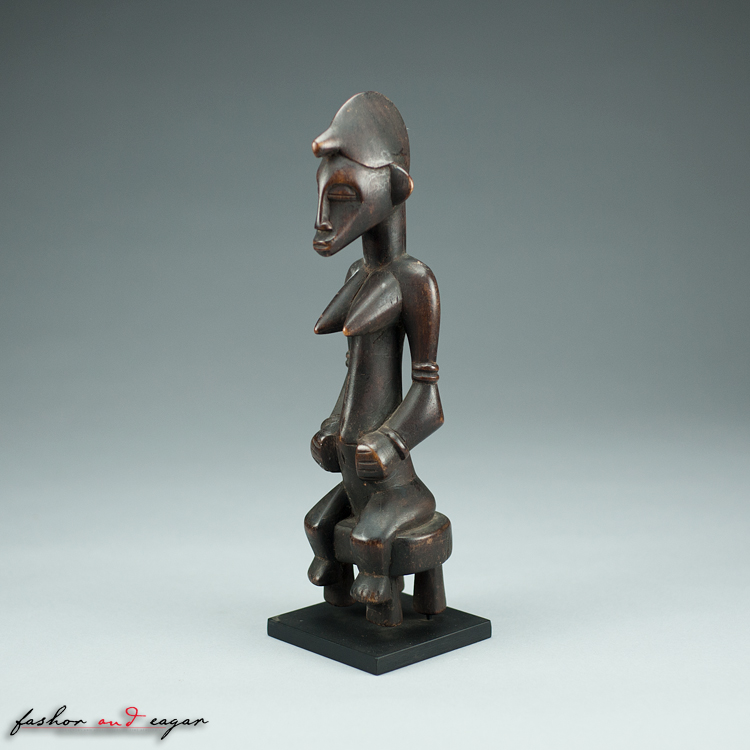
Collection
Kahugu Figures
ETHNIC GROUP
Part of the Benue people cluster
LANGUAGE
Gbiri-Nriagu – (gah)
ALTERNATE NAMES
Gura, Niragu
PRIMARY RELIGION
Christianity – Protestant
COUNTRY
Nigeria
MATERIAL
Bronze, oxidation, patina of age.
DIMENTIONS
26 inches tall x 18 inches length x 12 inches wide.
CIRCA
18th-19th Century.
PROVENANCE
Field Collected by Mr. Petrus De Jeu
EXHIBITED
No known exhibitions
LITERATURE
No known publications
CATALOGUE NOTE
These well provenanced, magnificent pair of bronze antiquities depicting royal equestrian ancestors are an homage to the Kahugu’s veneration of their ancestors. Field collected by Mr. Petrus de Jeu, an avid Dutch collector and ethnographer.
These images of great power, beauty, and sophistication are some of the oldest and rarest antiquities known to originate from the Kahugu peoples. The identical subjects on horses, from their coiffures, to both their jewelry adornment and the triangular patterned body scarifications, display obvious symbols of high society status. The bloated abdomens also depict the affluence of the well fed.
Better known by as Gure-Kahugu, the Kahugu, numbering about 40,000, are some of the least known ethnic groups in Nigeria. Located between Jos and Kaduna in northern Nigeria, they are part of the Benue people cluster. Gure is an ethnic group made up of several clusters of settlements that were originally located in an isolated hillside fifteen kilometers west of Lere Town. The people are comparatively smooth-skinned, light in complexion and slim-built; characteristics, which tend give credence to their claim of being of Fulani extraction.
Their primary language is Gbiri-Niragu. The primary religion practiced by the Gure-Kahugu is Protestant Christianity. They were de-isolated and brought to the limelight by the coming of the Christian Missionaries who settled there in the early 1930s and built the oldest primary school in Lere and Kauru Local Government Areas in 1942 and a Bible school in 1948. Consequently, Gure became an education centre where a large number of the educational elites in the Lere and Kauru area received their early religious and secular education.
All the Gure people, both converts to the new religion and those who still practiced traditional religion, eventually moved from the hills to the plains. This time, the settlements were not in groups of matrilineal clans. The villages were a mixture of different lineages, but the clans’ traditions were still observed.
| Weight | 30 lbs |
|---|---|
| Dimensions | 50 × 50 × 20 in |





